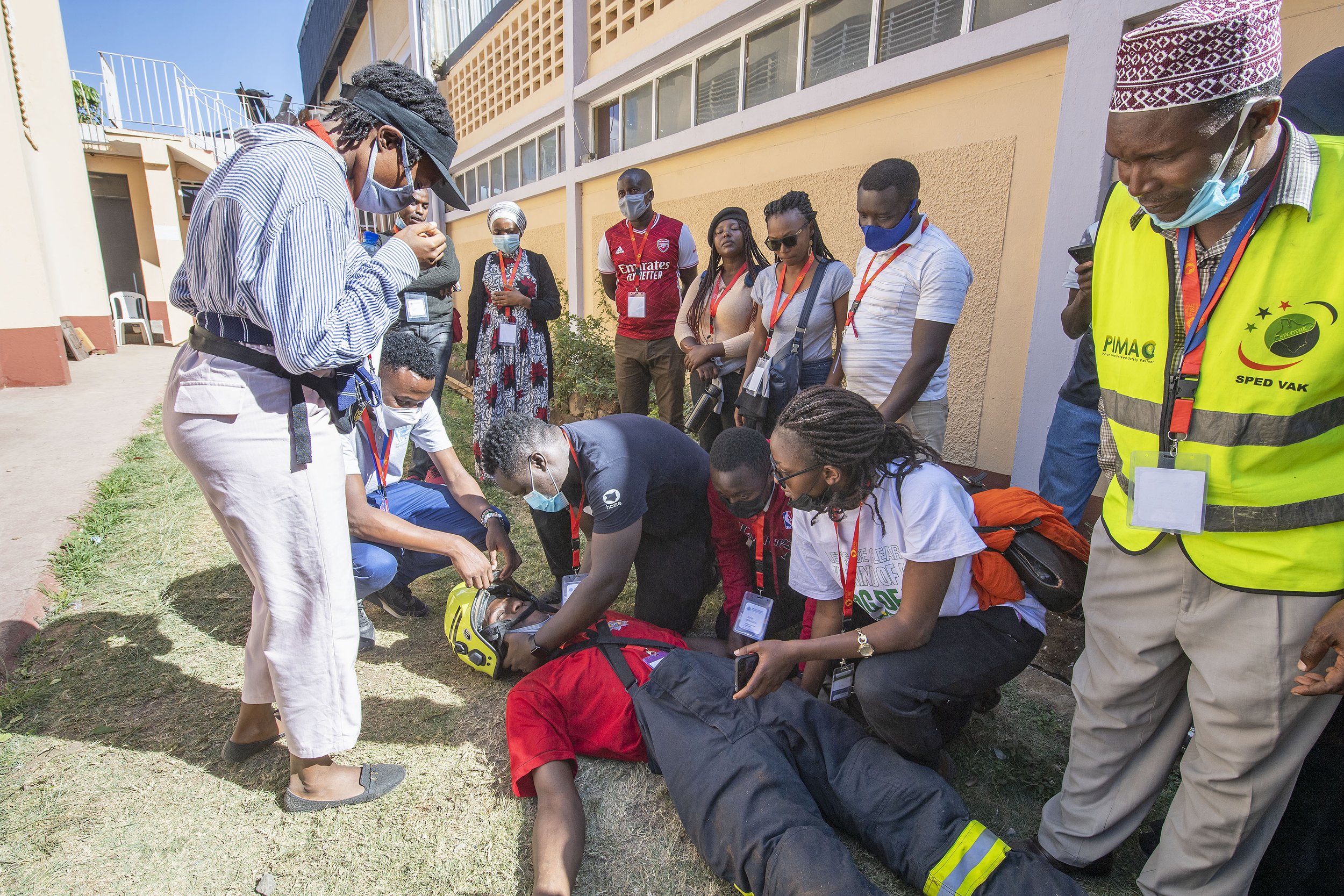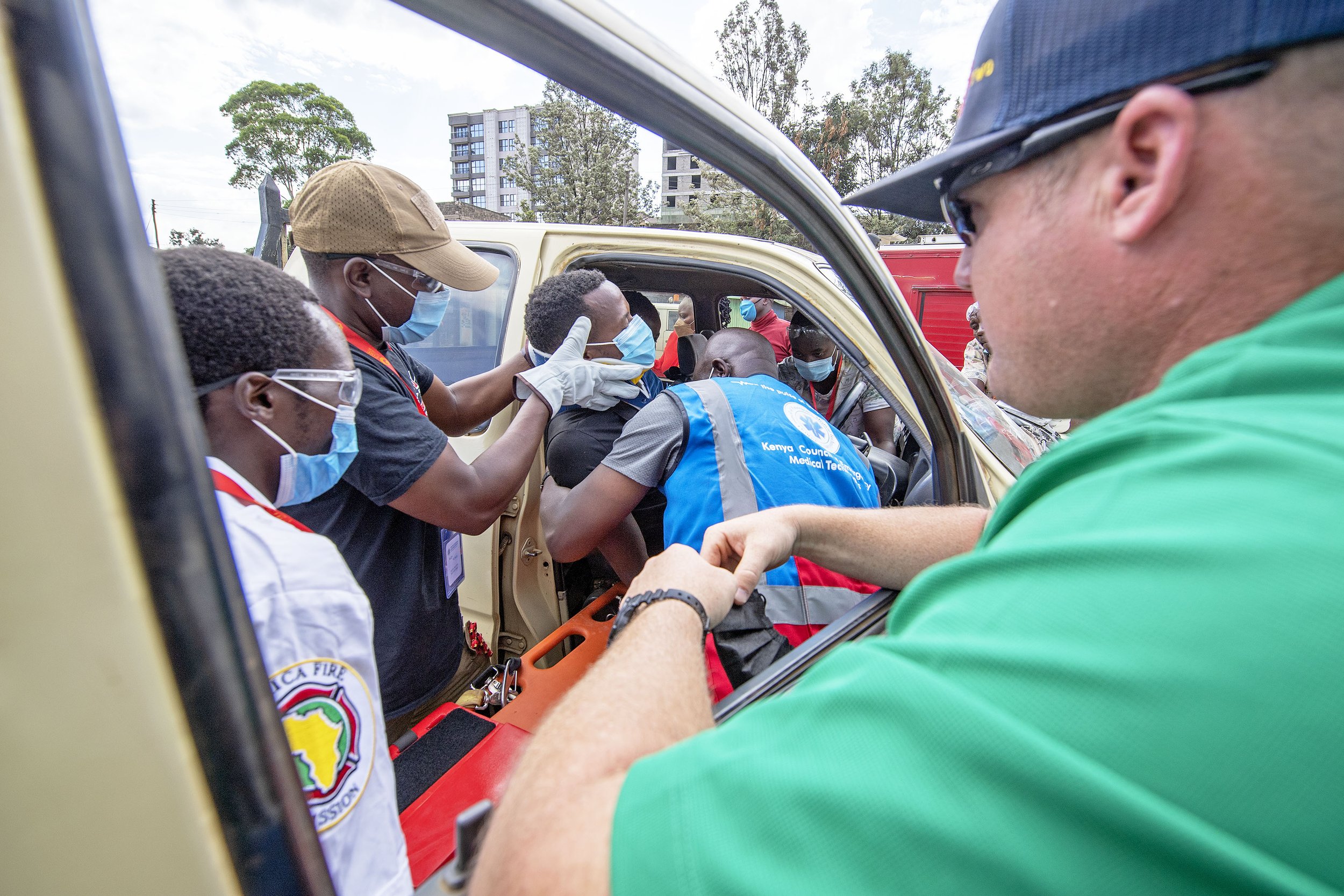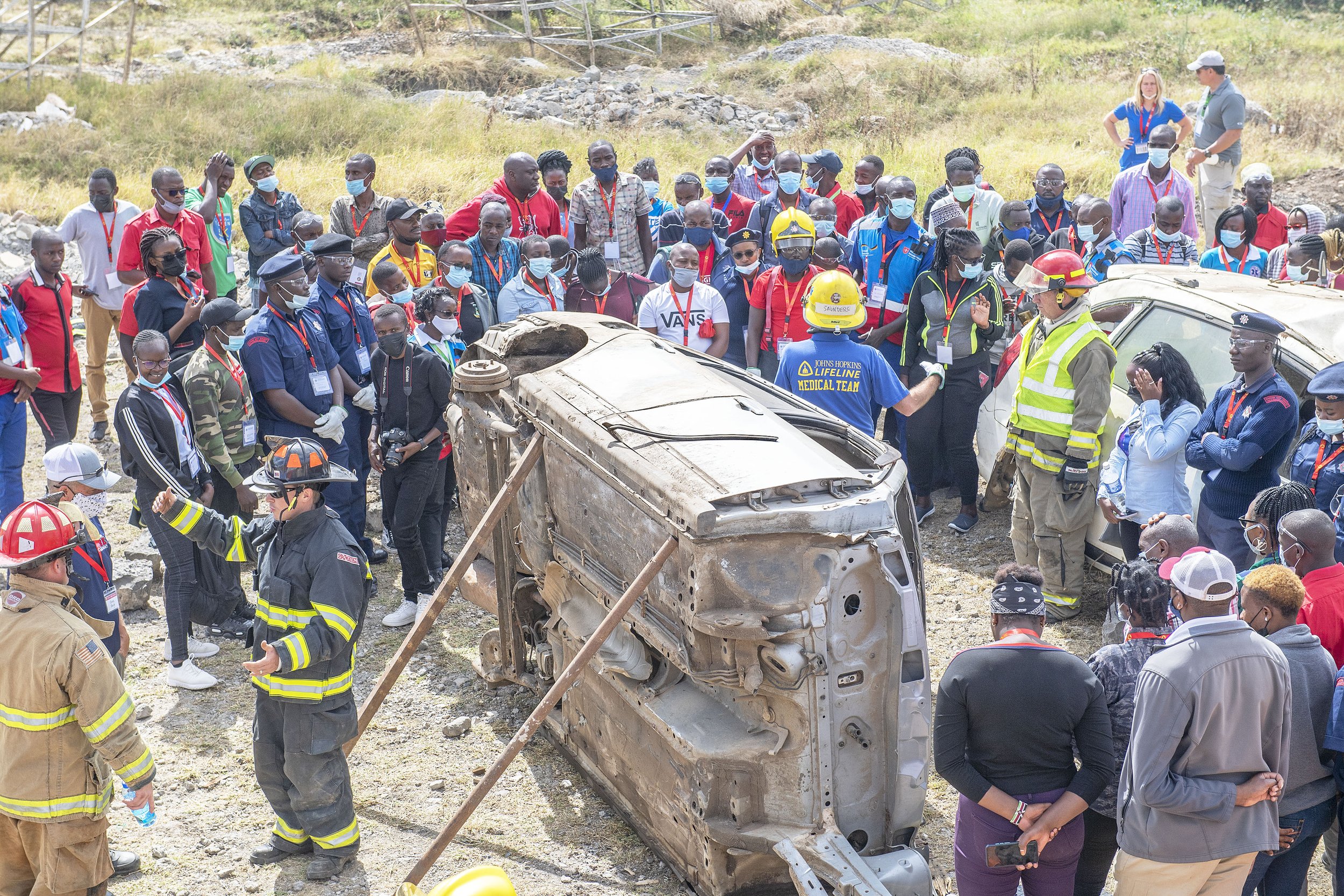By Howard Cohen
Not all firefighters are emergency medical technicians or paramedics, but often we are the first responders to scenes where it is necessary to provide life saving first aid. Therefore, it is important for all firefighters to have at least a basic knowledge of first aid. The purpose of this short article is to provide foundational principles for responding to trauma in situations where immediate life saving medical help is required. In no way should this article be considered first aid training. However, with the basic and limited information contained within, and no other training, you may still be able to save someone’s life.
Scene Survey: The First Task
Size up: Regardless of your level of technical first aid training or medical knowledge, when responding to an incident that involves injuries your first task is to gather as much information as you can about the situation. This is done through a careful size up. It is critical that you assess the risks and dangers before rushing in to administer aid. Ask yourself, “What is trying to kill or harm me?” Is it traffic, wildlife, fire, an unstable building, falling objects, or flooding waters? You do not want to become another casualty or cause further harm to the patient.
Number of patients: Once you’ve made the scene safe and stable now is the time to determine how people are part of the incident. It is easy to get fixated on patients who are calling out in pain, overlook those who are unconscious, or miss those who are not visible. It is also easy to rush to aid a person whose injuries appear more life threatening than they are, for example someone who is bleeding from a superficial head injury, while someone else nearby has stopped breathing.
Primary Survey: The Second Task
The primary survey is an assessment of the three main life supporting functions. These are the respiratory, circulatory, and nervous systems, also known as the ABCDs. Any problems involving one of these systems represents an immediate threat to the life of the patient and must be addressed immediately.
ABCDs: Once size up is completed, the scene is safe (or as safe as you can make it), and you have a sense of the number of patients needing aid, initiate a primary survey of the patients by checking the status of the three conditions which represent an immediate threat to life.
Airway: Check to be sure that the mouth and airway are cleared and air is actually going and out.
Blood is Circulating: Check to make sure that blood is not pouring out and that it is circulating.
Disabled: Check to see if the spine is stable and the central nervous system is operating normally. Due to the limited scope of this article I will not be saying any more about injuries that involve the head, neck or spine.
Basic Life Support (BLS)
Basic life support is the immediate treatment of one of the three life threatening emergencies found during your primary survey. The purpose of BLS is to provide temporary support to keep the patient alive while a secondary survey is conducted and/or until advanced treatment is available.
The simplest way to begin a primary survey is to ASK the patient, “How are you?” If he answers then you know that his airway is not obstructed (A), his heart is beating (B & C) and the brain is functioning (D). If the patient does not respond or responds in an unusual way you will need to look more closely.
Airway:
Airway problems are a result of an obstruction to the pharynx or larynx. The obstruction can be complete or partial. A complete obstruction is rapidly fatal, but can be effectively and dramatically treated by clearing the airway. There are various ways an airway can become obstructed such as from vomit, a foreign object or swelling caused from trauma, an irritant or allergic reaction. It is imperative that you clear the airway but you must do so without causing any additional harm to the patient.
Breathing:
It is possible for a person to have an open airway but still have difficulty breathing. This can be the result of an injury to the brain, spinal cord or diaphragm. The method for assisting a patient with breathing when more advanced medical care is not available is called positive pressure ventilation or artificial respiration (mouth to mouth). The rate of inflation should be about 12 breaths per minute or one every 5 seconds. Breaths should be about 1 to 1.5 seconds. Faster breaths can force air into the stomach which can lead to vomiting.
Bleeding & Circulation:
Uninterrupted circulation of blood is essential to staying alive. There are essentially two kinds of disruption to the circulation of blood that you can address as a first responder: cardiac arrest and bleeding. Cardiac arrest means the heart has stopped beating. While doing your primary survey if you discover that the patient has no pulse it means her heart has stopped beating and she is in cardiac arrest. It is important to note that under adverse situations, or if the patient is in shock, it can be hard to find a pulse. The carotid pulse is the strongest to feel and easiest to access. It is found on either side of the larynx in the neck. If there is no carotid pulse, the heart is not beating. CPR (cardiopulmonary resuscitation) is the only treatment for cardiac arrest. Even with hands-on training, it has limited potential to restore and sustain life.
The second kind of disruption to circulation is caused by a major loss of blood. Blood loss must be controlled as a part of BLS. Bleeding can be internal and both hard to identify and stop, or external, but not necessarily obvious. Addressing internal bleeding is beyond the scope of this article and most first responders in the field. External bleeding is controlled by direct pressure over the bleeding site with your hand, but preferably with a cloth or bandage. This is not to absorb the blood. It is to provide even pressure across the wound. Expect to apply direct pressure for 10 or more minutes. If the bleeding is not stopping, remove the bandage and check for the source of blood and then reposition your hand.
There is no easy rule for deciding when bleeding is severe. A rule of thumb is that if it looks like a lot of blood, then it probably is. However, it is worth noting that severe bleeding can be missed if the patient is wearing a lot of clothing or the blood is absorbed into the ground around the patient.
Conclusion:
When it comes to developing first aid skills, like all skills a firefighter needs to master, training and practice are essential. At the same time, it is important to read about the principles and theories undergirding these skills. However, there is no substitute for training and practice.
References:
The Outward Bound Wilderness First-Aid Handbook; Jeff Isaac & Peter Goth.
The Field Guide of Wilderness & Rescue Medicine; Jim Morrissey & David Johnson.
Opening an Unconscious Patient’s Airway with a Manual Manipulation:
https://www.youtube.com/watch?v=AifzmrpA7ao
https://www.redcross.org/take-a-class/cpr
About the Author
Howard retired from the Bennington Fire Dept as a deputy chief. He spends a lot of time writing and teaching various aspects of firefighting. He religiously works out every morning, doing a mix of high intensity interval training (HiiT), dumbbells, kettlebells, barbells and cycling. When he is not doing something for the fire service or working out he is the rabbi of two small congregations.










